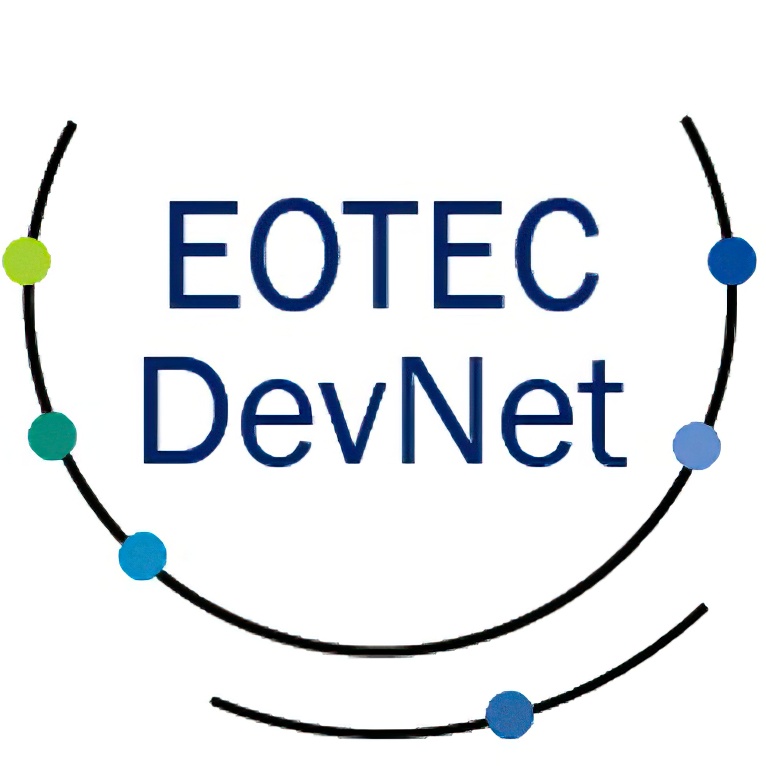Drawing on all the resources provided in this guidance, this page features expert insights and lessons learned.
Tips and Tricks
Get
Started
Explore Ways to Collect Information
Browse Assessment Examples
Discover Assessment Tools
Learn
Tips
-
 Planning
Planning
-
 Info & Data Collection
Info & Data Collection
-
 Analysis
Analysis
-
 Response
Response
-
 Monitor & Evaluate
Monitor & Evaluate
Map Your Stakeholders
Stakeholder mapping is a strategic planning tool used to analyze relationships and identify gaps or opportunities that may affect progress toward a specific goal. As resources allow, organize some kind of group meeting with partners to help identify and organize the key individuals, groups, and organizations connected to your EO-based service. This information can be captured in a stakeholder map.
A stakeholder map helps clarify who is involved, who is affected, and who influences decision-making at different stages of the project.
Your map should go beyond primary users to incorporate a wide range of perspectives. Consider:
- End users
- Data providers
- Policy makers and funders
- Subject matter specialists
Engage Your Audience
Effective needs assessments involve the communities they aim to serve throughout every stage of the process. Begin by asking:
- Who are the stakeholders or communities affected?
- What platforms, networks, or communication channels do they already use?
- What are their key priorities, challenges, and preferences?
Establishing early and ongoing dialogue builds trust, ensures relevance, and increases the likelihood that EO-based solutions will be adopted and sustained.
The initial consultation and needs assessment should develop into a sustained engagement and outreach process throughout the life of the service, creating a channel to continuously refine and improve approaches as design and implementation progress.
Adopt a Long-Term Perspective
Design your assessment with the future in mind. Consider:
- Opportunities to expand your assessment and capacity building efforts later
- Institutional stability and cost-effectiveness, and how they will ensure sustainability
- Adaptability to evolving technological and policy changes
- Realistic timelines, with actions prioritized based on urgency and impact
Start Small, Scale Thoughtfully
Before launching a major needs assessment, pilot your approach on a smaller scale. Even if you are doing a more targeted needs assessment, test your methods before you start. This allows you to:
- Validate the feasibility of your methods
- Gain stakeholder confidence
- Refine your questions and adjust priorities based on early findings
Be Clear and Consistent in Your Questions
The way you frame a question matters. To collect accurate, comparable responses:
- Use clear, jargon-free language
- Ask the same general questions across stakeholder groups
- Avoid shifts in language that could lead to vastly different interpretations
Adapt Your Methods To Your Audience
Tailor your outreach and data collection methods to suit the communication preferences and cultural contexts of your audience. The more accessible and relatable your engagement methods, the more meaningful your responses will be. Consider:
- Promoting surveys via trusted platforms your audience already uses (e.g., WhatsApp, Facebook, local radio)
- Using plain, accessible language
- Incorporating photos, infographics, maps, and simple diagrams to make complex information easier to understand
- Hosting focus groups, informal interviews, or community meetings in familiar spaces where participants feel comfortable
Remember to leverage your personal and professional network.
Respect Privacy Regulations
When collecting data, be aware of local privacy and data protection laws. For example, in Europe, General Data Protection Regulation is mandatory. Transparency and ethical data practices foster trust and legitimacy.
Ensure Data Interoperability
Make sure the data you collect and use can be easily integrated with existing systems, such as Geographic Information Systems (GIS). Interoperable data:
- Enhances usability across sectors
- Increases the impact of your findings
- Supports future collaboration and scalability
Leverage Existing EO Resources and Networks
Build on the work of established Earth observation communities and avoid duplication of efforts. Leveraging resources such as the European Union’s Copernicus Data Space Ecosystem, NASA Earthdata, and GEO’s GEOSS portal offer access to rich data repositories, technical expertise, and valuable user communities. Similarly, consider local organizations and institutions already invested in your areas of interest. They can enhance your efficiency and credibility while accelerating the assessment process. This will contribute to stronger, more actionable results.
Recognize and Integrate Diverse Perspectives
EO data can be interpreted differently depending on the viewer. For example:
- An engineer may analyze technical aspects.
- A lawyer may focus on regulatory implications.
- A diplomat might consider political repercussions.
- A community member may prioritize local impact.
Understanding different perspectives – and integrating them into the findings – is key in a needs assessment.
Use Mixed Methods to Validate Your Findings
When possible, triangulate your data using multiple validation methods (e.g., surveys, interviews, observational data) to:
- Reduce bias
- Increase accuracy
- Capture diverse perspectives
Remember, some insights may rely on non-EO data, such in situ data from ground, sea or airborne sources.
Use the “5 Whys” to Find the Root Cause
To understand the need or problem, ask “Why?” 5 times in succession.
For example, in a situation where EO data isn’t being used for disaster risk management (DRM) preparedness:
- Why are the disaster managers not using EO data for preparedness?
- They are not aware it exists.
- Why are they not aware it exists?
- There is limited outreach of EO providers to DRM.
- Why is there limited outreach?
- EO and DRM operate in separate domains that don’t often communicate.
- Why don’t they communicate?
- No formal mechanism exists to link them.
- Why hasn’t such a mechanism been established?
- A needs assessment identifying the gaps has never been conducted.
This process often reveals foundational gaps – such as the need for better cross-sector coordination – which might not be evident at first glance.
Tailor the Response to Real Life
Offer practical, hands-on capacity building using the same data and tools participants will use in their work. Prepare well by ensuring the data and tools are accessible and ready to use. Sustain support after the capacity building to help partner organizations to embed EO workflows into their standard operating procedures.
Keep Going with Co-Design
Collaboration does not stop after the assessment – users are essential to planning the response. Engage decision-makers, technical staff, and other key partners early in the process to hear their expectations and priorities. This may be the best way to ensure the capacity building response is directly relevant to their policy, planning, or operational needs.
Build a Community to Sustain the Response
The capacity building response will have a greater impact and be more sustainable with support from a broader network. Seek buy-in from influential partners, agency leadership, and others well positioned to keep the learning going. A community of practice – even one that connects via a mobile phone message group – can continue the knowledge sharing and peer-to-peer learning.
Training May Not Be the Answer
Don’t rush into a training plan before considering what other forms of capacity building might be useful. A combination of methods, such as workshops, on-the-job mentoring, online modules, and peer learning may be the most effective way to build and sustain skills. The assessment results should help determine what direction to take.
Share Your Findings to Foster Momentum
Stakeholders will benefit from learning what you learn about the effectiveness of the assessment intervention. Engage both trainees and decision-makers at the onset in defining what “success” looks like for the intervention, and then workshop the results afterwards. That will generate leadership buy-in and consensus around continued challenges and gaps.
Use Storytelling for Communication
Alongside the quantitative data, be sure to capture and communicate human stories to show how EO capacity building makes a difference in people’s lives. Case studies, short videos, story maps, and infographics can help non-technical audiences grasp the impact. This may be the most effective way to persuade decision-makers that EO is valuable to the work – and that capacity building is vital to ensuring impact.
Track Both Numbers and Experiences
Just as you did during the assessment, combine quantitative metrics with qualitative feedback to measure the impact of the intervention. Apply the lessons learned to update processes and feed them back into the needs assessment cycle. This will create a positive feedback loop and create opportunities for scaling.
Do you have an assessment example, tool or other resource to add to this guidance?
Contact us and share it at: secretariat@eotecdev.net
